I'm starting this blog to track the events in the life of little Audrey 2, a reluctant starter that began as a rather wet batter form and, as recommended by Mini, was transformed into a ball of stiff starter. In a forum thread I started in order to get help figuring out why my then 13 day old starter was doing nothing, Mini's thought was that possibly I was underfeeding the starter in the wetter form (basically I was doing 50% starter, 25% each water and flour for each feed) which may have been the reason it went all hoochy rather fast: not enough flour to feed the yeasties and the acid bacteria was overtaking - or that was my thought on it anyway.
I'm also doing this as a blog so the forum thread isn't taken over by too many images and so it's easier to follow along, should anyone care to.
Since this starter, third time trying over a three month period btw, was pretty much destined for the recycling bin anyway in favour of starting yet again with a recipe Mike has on his site (Professor Calvel's Starter) as a likely successful candidate for starter if the previous verion failed. Since this was try #3 and I was already on day 13 with no real success, I was game.
So while I was/am waiting to locate a source for just 5g - about a tablespoon - of malt extract (it seems to come in 600g sizes or bigger running at nearly $10 a pop) to follow the Clavel reicpe, I got going with the stiff starter. So here's the saga.
As per Mini's sugegstion, I took 30g of the "going nowhere" batter starter, added 50g of water and "enough flour to make a stiff ball". Out came the flour and off we went.
Here's our first image, Audrey 2 after being mixed up. In all, I added about 88g of flour to get to this.
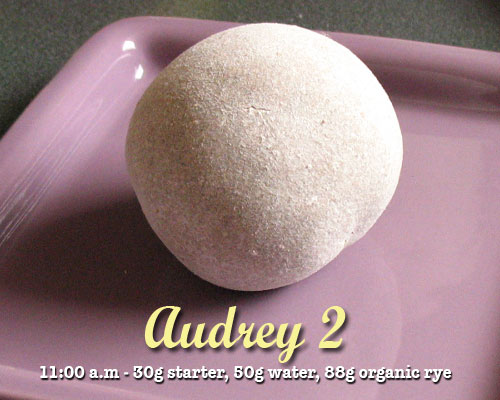
I now think that 88g of flour was too much but that's where we were then, so on we go. I had followed Mini's suggestion to drop the ball into the flour and coat it so that any developing cracks would be obvious which is why, even though it's a ball of wet rye, it looks very pale.
Three hours later:
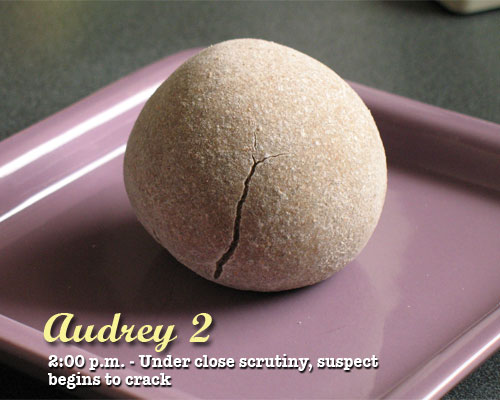
At this point, there's either a shrinkage of the surface or it's expanding a little. Since the surface was still moist-ish to the touch, I'll say we had expansion.
At the six hour mark:
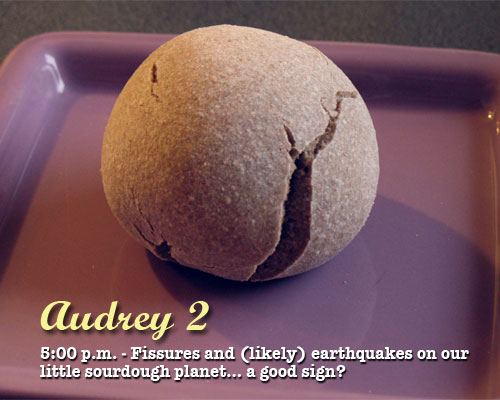
More activity although the ball is showing no signs of softening and flattening out as Mini suggested it would. I'm starting to think I went too far with the added flour.
At the 10 hour mark:
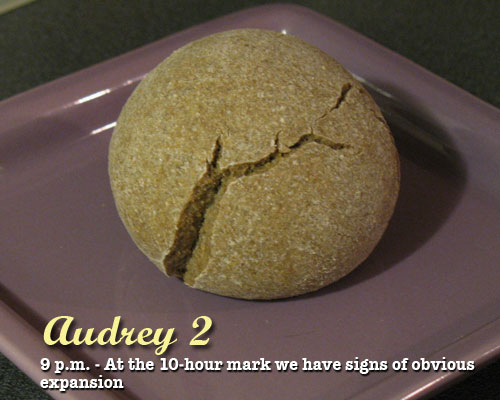
Definitely some activity and expansion has occured but now I'm sure the ball was made TOO stiff. Yes, the critters have lots of flour to munch on, but nothing to drink. Because I wasn't staying up much longer, I decided to do feed #2 at this point so it was time to cut up our ball and see what was going on inside.
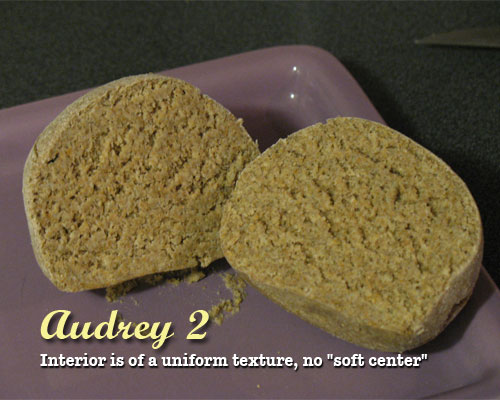
Even manhandled like this, the ball is stiff enough to stay in shape. Slicing it open, thetexture inside is realtively smooth, if there are any bubbles, they're hard to see and distinguish from the texture of the rye flour. There's little sour aroma to this, mostly it smells like wet rye.
Time for feed #2...